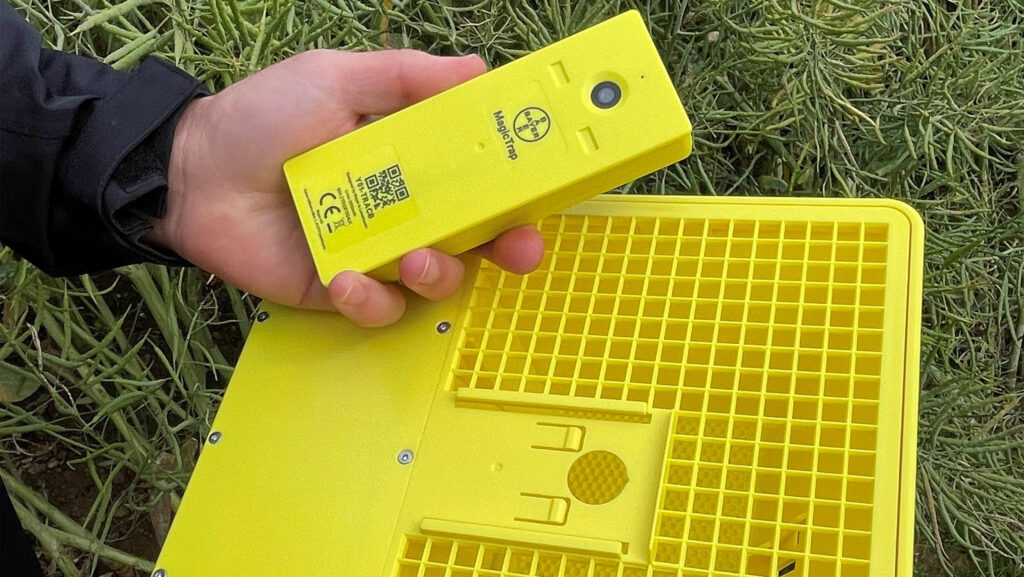Cereals 2024: Smart trap alerts OSR growers to pest threats
 © MAG/Richard Allison
© MAG/Richard Allison Oilseed rape growers will soon be able to remotely monitor pest numbers in their crops, following the launch of a digital yellow water trap.
Yellow water traps are a valuable tool used by some agronomists, but they are impractical due to the time involved in manually checking and identifying their contents.
In contrast, MagicTrap developed by Bayer is a fully automated system that automatically detects, categorises and quantifies a range of insects.
It is able to distinguish between pests and beneficials, therefore providing farmers updated information on pest pressure and migrations.
See also: Cereals 2024: Winter barley offers resistance to key virus
Initially for use in oilseed rape, Bayer says the system is currently proven to accurately detect cabbage stem flea beetle (CSFB), weevil and pollen beetle.
Speaking to Farmers Weekly at the Cereals event, Bayer digital manager Max Dafforn points out that these traps have been in commercial use in Germany for the past two seasons.
UK agronomist experience
Prior to the UK launch, a number of agronomists trialled the trap last autumn, including Association of Independent Crop Consultants agronomist and CCC Agronomy technical director Peter Cowlrick, with one of his clients in Hampshire.
Peter says: “You can’t be on every farm every day. Trying to assess the migration patterns of something like cabbage stem flea beetle is pretty challenging.”
He adds that agronomists do not want to use insecticides unless they have to, but there is simply a need to manage CSFB larval numbers.
“What I liked about it was its automation. It provides us with images twice a day and flea beetle identification from those images were very accurate, as were the counts.”
Combined with physical inspection for foliar damage, he says the remote monitoring supported a a decision to apply an insecticide at the four-leaf stage.
“Subsequent larvae numbers in the treated crop were found to be low, at 2-3/plant and have not impacted crop growth.
“In contrast, larval numbers were noticeably higher in other fields on the farm that were not sprayed.”
Without the system, he believes the decision to spray would have been based more on gut feel.
Drill timing tool
Max believes another use is to deploy them in fields prior to drilling oilseed rape to indicate when the CSFB migration occurs, to help with drill timing and minimise the threat from the pest.
“Then drill just as numbers start to trail off, when the peak has passed.”
Traps will be available at the end of June and will cost £169. There will also be a subscription cost of £49/year for up two traps, £99/year for up to five traps, and £149/year for up to 10 traps.
How do they work?
Traps consist of a solar-powered, high-resolution smart camera which photographs the trap contents at regular intervals.
Artificial intelligence image recognition provides automatic species identification, automatically sending insect counts to the MagicScout smartphone app.
This alerts users when pre-set pest thresholds are exceeded.
The trap is solar powered with a seven-day battery back-up and a water reservoir topping up trap levels for up to three weeks.
A specially designed grid prevents bees and other beneficials entering the trap.

